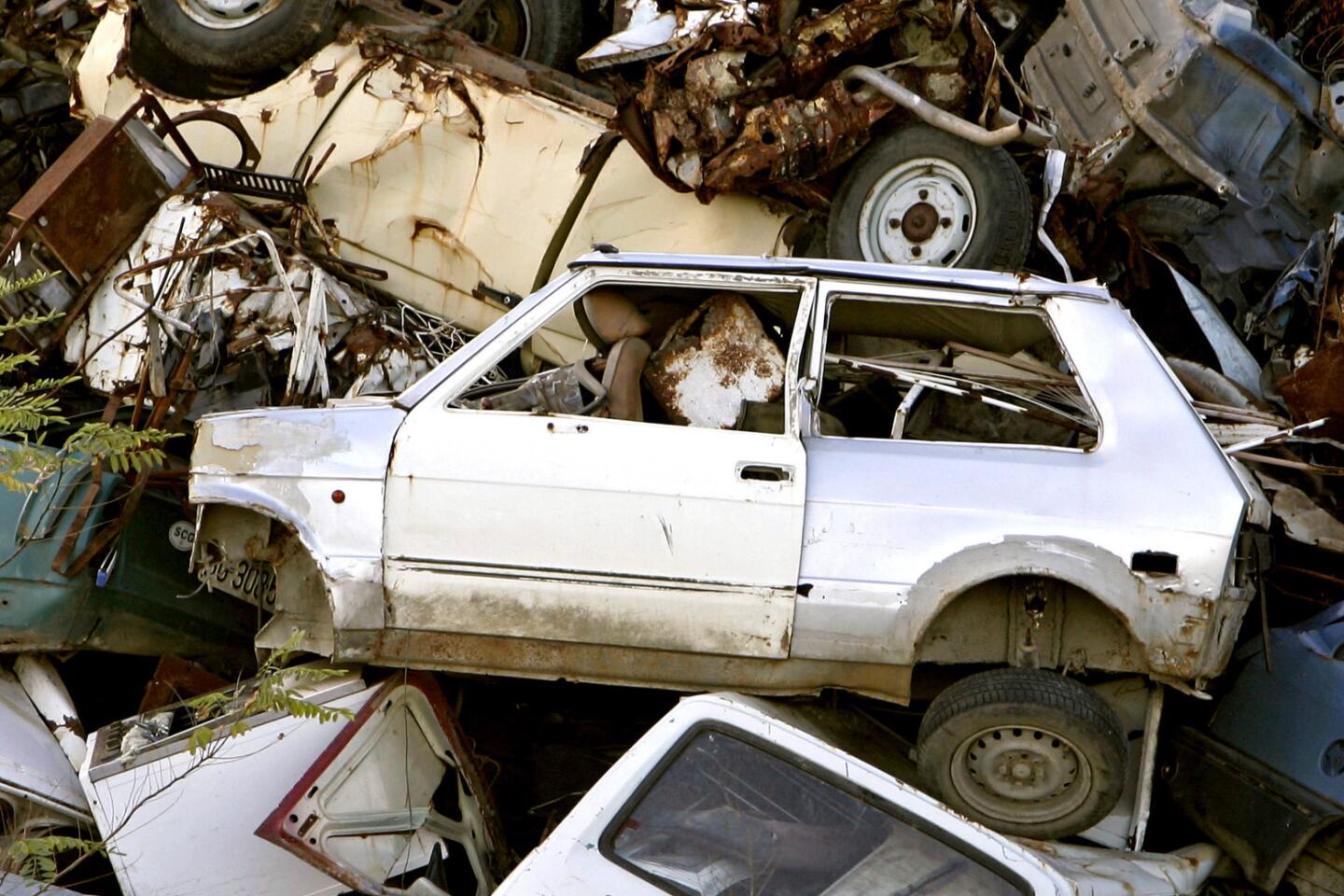Tesla to install high-strength battery shields to reduce fire risk
Tesla Motors Inc. has announced plans to reinforce the undercarriage of about 16,000 cars with high-strength shields to reduce the risk of damage from a crash starting a fire.
Elon Musk, the electric car company’s chief executive, outlined the retrofit Friday morning, at the same time the National Highway Traffic Safety Administration announced that it has signed off on the changes and was closing a probe into two fires that occurred in Tesla Model S sports sedans.
The NHTSA did not ask Tesla to issue a recall for the Model S.
“NHTSA has not identified a safety defect trend at this time that would justify the agency issuing a recall request letter,” the agency said.
One analyst, Karl Brauer at auto information company Kelley Blue Book, said the automaker’s plans are similar to a recall because they involve a change in design. Owners who want their cars retrofit must get them to a Tesla service center, he said.
Tesla said the retrofits are voluntary and that federal regulators did not find a “safety-related defect trend.”
Tesla has fought regulators over the use of the word “recall,” not wanting to be linked to the giant actions that have plagued traditional automakers such as Toyota Motor Corp. and General Motors Co.
Both Tesla fires started after road debris penetrated the undercarriage battery packs that power the Model S.
Musk noted that the fires occurred under unusual circumstances. In one accident in Tennessee, a trailer hitch ball from another vehicle punched into the battery pack. The other case was in Washington state and was more severe, a result of unidentified road debris penetrating the battery case.
“In both incidents, the struck objects penetrated the aluminum pan at the forward area of the battery, damaging the lithium ion cells of the high voltage battery,” the NHTSA said in its report.
The information display in the cars told the drivers that battery performance had suddenly decreased and asked them to park, the agency said.
“In both cases, smoke appeared shortly after the vehicle stopped and a fire developed in the high voltage battery,” the NHTSA said. “Thermal runaway occurred in the high voltage battery cells. The fires destroyed the vehicles but did not result in injuries.”
Last November, Tesla updated the software on its cars to raise the ride height.
The Palo Alto automaker’s testing demonstrated that fix would likely prevent accidents such as the trailer hitch ball penetrating the batter casing, the NHTSA said. But it wasn’t clear if that change would reduce the risk of accidents such as the Washington incident, the safety agency said.
Earlier this month, the automaker started making its cars with what Musk called a “triple underbody shield.” He said Tesla will make the same changes, free of charge, to existing cars on request or as part of normally scheduled service.
“We felt it was important to bring this risk down to virtually zero to give Model S owners complete peace of mind,” Musk said.
Tesla will install a rounded, hollow aluminum bar designed to either deflect objects entirely or absorb the impact and force debris upward into a plastic aerodynamic casing or the front trunk liner forward of the battery pack. Such an impact would cause no significant structural damage and leave the car drivable, Musk said.
The automaker also will add a titanium plate to protect sensitive front underbody components from being damaged. Finally, it will install a third shield: a shallow-angle, solid aluminum extrusion to further absorb impact energy and allow the car to ramp up and go over an object that won’t compress and is immovable.
“Tesla’s revision of vehicle ride height and addition of increased underbody protection should reduce both the frequency of underbody strikes and the resultant fire risk,” the NHTSA said.
[For The Record, 12:01 p.m. March 28: An earlier version of this story stated that announcements by Tesla and the National Highway Traffic Safety Administration functionally work as a recall. Kelley Blue Book analyst Karl Brauer was also quoted as saying that their actions were the “definition of an automotive recall.” The NHTSA did not order Tesla to recall the vehicles and its investigation found no “safety-related defect trend.” Additional comments from Tesla and the NHTSA are included.]
ALSO:
Toyota admits deceiving consumers, regulators
As automakers ramp up sales incentives, here are 5 top deals
Federal bailout, bankruptcy lets GM escape liability in fatal crashes
Follow me on Twitter (@LATimesJerry), Facebook and Google+.








